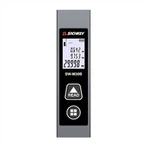How to use the HFE file of the multimeter
The function of the multimeter to measure voltage, current and resistance is realized through the conversion circuit part, and the measurement of current and resistance is based on the measurement of voltage, that is to say, the digital multimeter is expanded on the basis of the digital DC voltmeter. The converter converts the analog voltage that changes continuously with time into a digital quantity, and then the electronic counter counts the digital quantity to obtain the measurement result, and then displays the measurement result by the decoding display circuit. The logic control circuit controls the coordinated work of the circuit, and completes the entire measurement process in sequence under the action of the clock.
The HFE file on the multimeter is used to measure the current magnification of the transistor. This kind of meter has a socket for measuring the transistor. When measuring, insert the triode into the corresponding polarity jack to read the current magnification of the transistor.
Many small multimeters have gears and sockets for measuring transistors, and it is more convenient to use them to measure the DC magnification B and penetration current Icbo of transistors. However, some circuits have strict requirements on transistors, and the above parameters alone cannot meet the requirements, and B, Iceo, and ICbo are often measured. It is normal, but it cannot work normally after installation, which makes the maintenance work take a lot of detours.
Found in practice, take the V-l01 multimeter as an example. After measuring B on the multimeter with the three-stage tube according to the normal method, if it is normal, then measure the "reverse magnification" in reverse. If the pointer indicates that the swing is less than 5 times (the original HFE scale), it means that the tube is usable, such as The needle indicates that the swing is large, and the tube cannot be used in a circuit with less stringent requirements.






